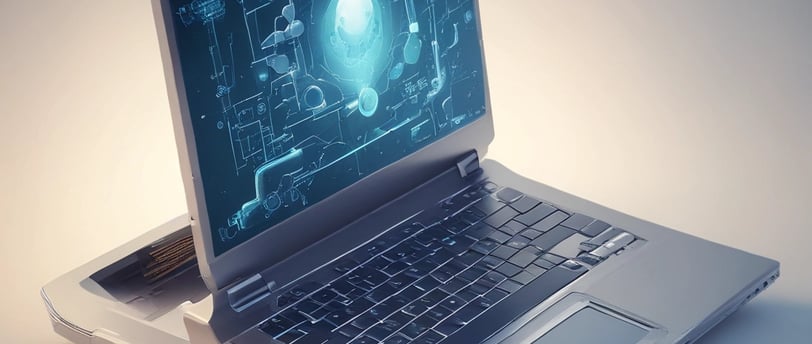The Fascinating History of Laptops: From Luggables to Ultra-Slim Machines
Laptops are everywhere today—at work, at school, in coffee shops, and even on airplanes. But these sleek, powerful machines have come a long way from their bulky ancestors. Let’s take a journey through the history of laptops to see how they evolved into the indispensable tools we use today. The Birth of Portable Computing (1970s–1980s) The idea of a computer that could be carried around began in the 1970s. These early machines were often called “luggables” because, while technically portable, they were large and heavy. 1975: IBM 5100 One of the earliest portable computers, it weighed about 55 pounds and had a tiny 5-inch display. It was more transportable than portable. 1981: Osborne 1 Often credited as the first truly portable computer, the Osborne 1 weighed 24 pounds, featured a 5-inch screen, and ran CP/M. It cost $1,795 and was a hit with traveling professionals. 1983: Compaq Portable A key milestone, the Compaq Portable was IBM-compatible and helped launch the market for portable PCs. Rise of the Laptop Design (Late 1980s–1990s) The term “laptop” came into mainstream use in the late 1980s when computers became small enough to fit on a lap. These machines started to resemble what we now recognize as laptops. 1989: Macintosh Portable Apple’s first attempt at a portable computer. It was innovative but bulky and expensive. 1989: GRiD Compass 1100 A true milestone, it was one of the first to use the clamshell design (screen folds over keyboard), influencing all future laptops. 1991: Apple PowerBook Series Apple introduced a trackball and palm rest, both standard features today. 1995: Windows 95 and Intel’s Pentium Processors These technologies made laptops more powerful and user-friendly, fueling their popularity. The Wireless Era (2000s) The early 2000s marked a golden age for laptops. With the rise of Wi-Fi, USB ports, and DVD drives, laptops became full-featured alternatives to desktops. 2003: Centrino Technology (Intel) Intel’s Centrino chip enhanced battery life and wireless capabilities, making laptops far more efficient. 2006: Apple MacBook Pro A major shift as Apple moved from PowerPC to Intel chips, improving performance and compatibility. Modern Laptops: Thin, Light, and Powerful (2010s–Present) Today’s laptops are fast, ultra-portable, and packed with power—thanks to advances in processors, storage (SSDs), and batteries. Ultrabooks Coined by Intel in 2011, Ultrabooks set new standards for slimness and battery life, pushing innovation further. 2-in-1s and Convertibles Devices like the Microsoft Surface or Lenovo Yoga combine laptops and tablets, offering touchscreens and flexible hinges. Apple Silicon (2020–Present) Apple’s custom M1 and M2 chips revolutionized performance and battery efficiency in MacBooks, setting new benchmarks. The Future of Laptops From foldable screens to AI-enhanced features and cloud-powered ecosystems, the future of laptops is both exciting and unpredictable. But one thing’s clear: portability, power, and productivity will continue to drive innovation. Conclusion: From 55-pound beasts to ultra-thin powerhouses, laptops have transformed how we work, learn, and connect. As technology continues to evolve, laptops will remain at the center of our digital lives—more capable and more essential than ever.
Grenade Computers
6/19/20251 min read


Laptop reviews blog
